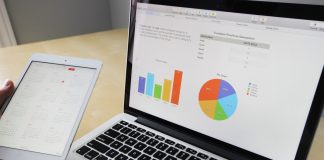
As globalization increases, international trade is becoming more prevalent. Economists like to say that the primary gain from international trade is an increase in the living standards of trading partners.
But what does this mean? It means that individuals and countries can benefit immensely from trading with each other. For example, one country might be good at producing computers but not clothing, while another country might be good at producing clothing but not computers. But both countries would benefit if they traded with each other because they can use what they’re best at to make up for what they’re worst at.
This allows them to have a better quality of life and pursue their own unique interests without being limited by their weaknesses. Read on for a comprehensive guide on how to go about doing this!
The Importance of International Trade
International trade is the process in which goods, services, and capital are traded between countries. It’s a mutually beneficial exchange of resources that benefits all parties involved.
It’s easy to notice why international trade has evolved so essentially in recent years. As globalization increases, more and more countries are trading with each other. Economists often say that one of the primary gains from international trade is an increase in the living standards of trading partners.
This means that individuals and countries can benefit immensely from trading with each other. For example, one country might be good at producing computers but not clothing, while another country might be good at producing clothing but not computers. But both countries would benefit if they traded with each other because they can use what they’re best at to make up for what they’re worst at.
This allows them to have a better quality of life and pursue their own unique interests without being limited by their weaknesses.

Basics on International Trade
There are many benefits of international trade. The primary gain, as mentioned earlier, is an increase in the living standards of trading partners.
For example, assume one country has a high standard of living and produces a lot of clothing, but not many computers. The other country has a low standard of living and can’t produce clothing well but is very good at producing computer products. If both countries traded with each other, they would be able to use what they’re best at to make up for their worst.
This would allow them both to have a higher quality of life and pursue their own unique interests without being limited by their weaknesses.
However, sometimes there’s more opportunity for trade with another country instead of your neighbors or with your partner from the same country. You might be able to find a perfect trading partner in a different part of the world who can provide you with goods that you’ve been struggling to find locally.
What Type of Trade Should You Enter?
There are many different types of trade that countries can engage in with one another. Open-border trade, for example, is defined as the process by which countries allow the free movement of goods and services across borders. One good example is NAFTA: it’s a trade agreement made to reduce barriers and increase trade among Canada, Mexico, and the United States.
Another type of trade we will be exploring is regional integration. Regional integration is how nations work together to construct a unified economy and common market – like the EU or ASEAN. The goal is to remove barriers between members and promote economic growth through increased mobility of factors of production such as labor, capital, and goods.
Trade liberalization can also be characterized as removing obstacles to international trade such as taxations, quotas and other limitations. When these barriers are removed, consumers have an increased opportunity to purchase products at lower prices than they would if those barriers were put up.
There are many types of international trade agreements we should know about! But how does global trading affect people?

How to Find Trading Partners
Before you start trading with a country, it’s important to find out what they’re good at.
Finding a trading partner can be easy or difficult, depending on how much information they have about themselves. If they produce information about their exports, you can search online for the information and contact them from there. However, some countries don’t produce this kind of information which makes it hard to find a partner.
In this situation, you may need to contact government officials or trade representatives who can help put you in touch with the right people.
Tips for Successful Trade
The first step to successful international trade is knowing what you have to offer.
One of the most crucial international trade factors is defining your strengths and weaknesses. This is especially important for businesses, as they want to focus on what they’re best at and use that strength to make up for their weakness.
If you’re not sure where to start, try looking for opportunities online or in your local area that might be a good fit for your business. If you need help with figuring out what products or services would be a good match for your company, there’s no time like the present to reach out and tap into industry knowledge.
Next, look for potential trading partners who can meet your needs and wants.
You may find some countries that are stronger in areas where you need help than some others. Find those countries and do some research on them before reaching out with some initial contact information, such as an email address or phone number.
It doesn’t hurt to ask!
International trade has been an integral part of human history. It is the driving power behind the development of our world and prosperity. When we trade with other countries, we can get many things we need, and we can make money by trading goods and services.
International trade is a win-win situation, and if your business is considering trading, you should be aware of these five tips for successful trade:
- Be open to new markets
- Consider the risks
- Understand the culture
- Learn the language
- Find a trading partner who speaks your language















































